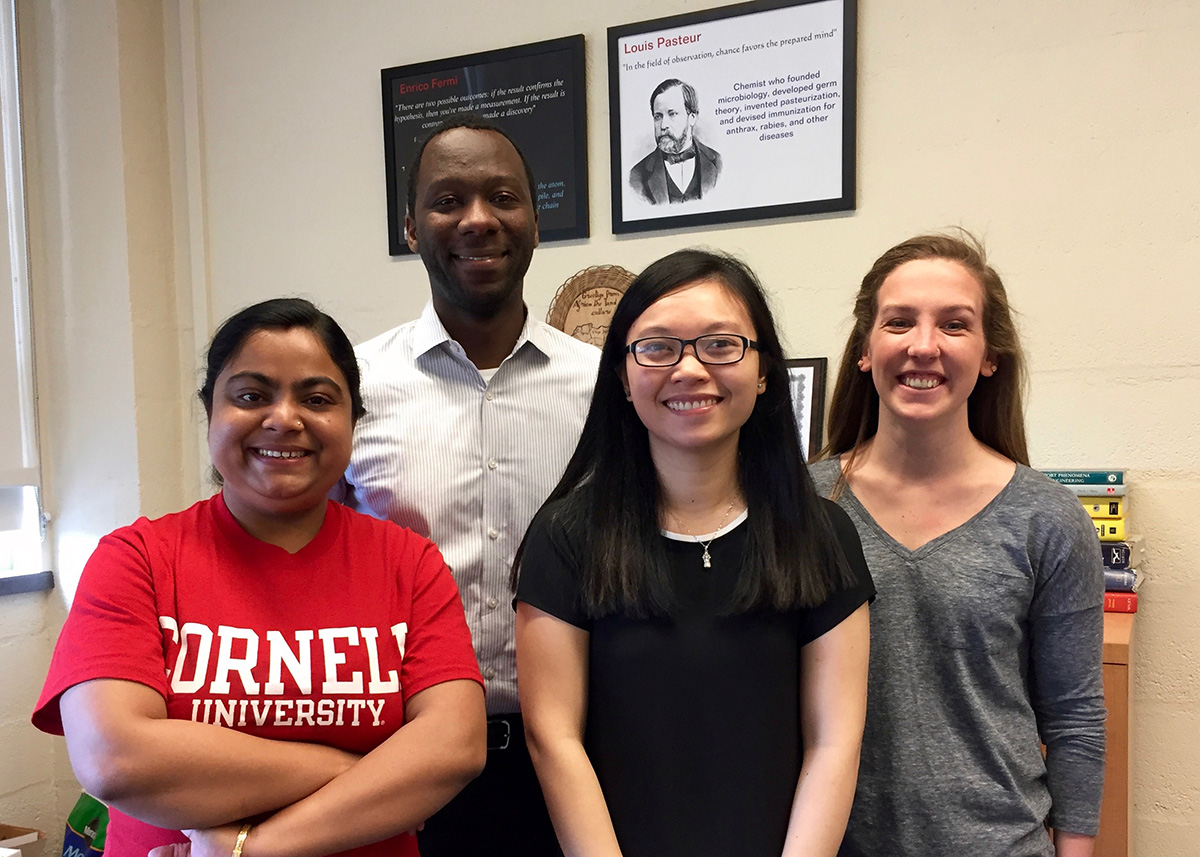Bioactive macrocycle shows promising antibacterial activity
By Tom Fleischman

A group of Cornell researchers has published a study detailing a simple, efficient method for the assembly of biologically compatible polymers, with complete control over their composition and arrangement. Their findings could lead to new antibacterial drugs and drug-delivery systems.
Christopher Alabi, assistant professor in the Robert Frederick Smith School of Chemical and Biomolecular Engineering, led the study. His group specializes in biomimetics – the study of biological structures and systems for the purpose of creating man-made replicas – focusing on how molecular composition and sequence influence macromolecular assembly, chain dynamics and, ultimately, chemical and biological properties.
His group’s paper, “Sequence-defined bioactive macrocycles via an acid-catalysed cascade reaction,” was published May 9 in Nature Chemistry. Collaborators, all from his lab, included postdoctoral researcher Mintu Porel, and Dana Thornlow and Ngoc Phan, graduate students in the field of chemical engineering.
“I think we’ve made significant progress,” Alabi said. “I think the overall goal is not to recreate biological molecules – the goal is to maybe capture some of the functions of what we want, in the smallest sequence that we can make.”
The “bioactive macrocycle” the group synthesized, oligothioetheramide (oligoTEA), was duplicated more than 20 times in various forms in the group’s study, proof of the process’ simplicity and versatility.
“We were looking to make something with simple chemistry, that anyone can make,” Porel said. “It’s very versatile in that way.”
Preliminary results indicated the macrocyclic oligoTEAs display potent antibacterial activity.
A macrocycle is a polymer or macromolecular chain that is folded, or tied, together to form a ring. The size of the ring depends on where you place the knot; think a string of pearls.
“We can essentially tie these strings into different structures,” Alabi said. “If you take two pearls on a string and you want to fold just these two pearls together, you have to put functionalities on them that would allow the reaction you’re looking for to take place.”
The word “bioactive” is all-important, Alabi said, in what his group has done in this work and in other research. That means it has to be able to function in a biological system, such as the human body.
“Things have to be bio-compatible and simple to put together,” he said. “The functionalities that you’re including are specific to a target biological application. … It refocuses the project to something that, in the long term, is commercially viable and biologically relevant.”
In nature, macrocycles can be hundreds or thousands of monomers (building blocks) in length, but Alabi said his system is currently limited to about 20 blocks. But the ability to control where the building blocks are placed along the polymer chain, and to have them do what they’re supposed to do, is exciting and bodes well for future study.
“We’re just scratching the surface,” he said. “Biological molecules fold into myriad structures, so we’re taking baby steps and trying to understand the role of composition and structure on molecular function.”
But for their purposes, he added, that is sufficient.
“To make this into a drug, it has to be simple and it has to be cheap,” he said. “It has to be scalable – you have to be able to make drums of it. And that’s what we keep in the forefront. Otherwise, it’s just a really fancy molecule that’ll be limited to laboratory studies.”
This work was supported by a grant from the Army Research Office, Cornell University startup research funds, a Nancy and Peter Meinig Investigator Fellowship and a National Science Foundation graduate research fellowship.
Media Contact
Get Cornell news delivered right to your inbox.
Subscribe